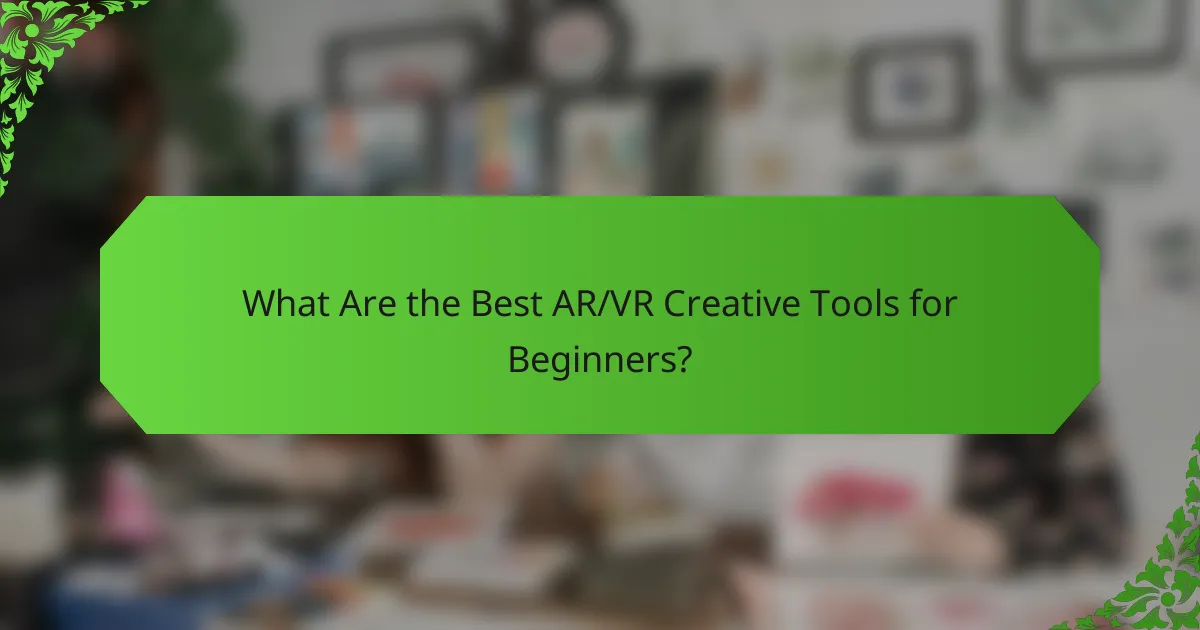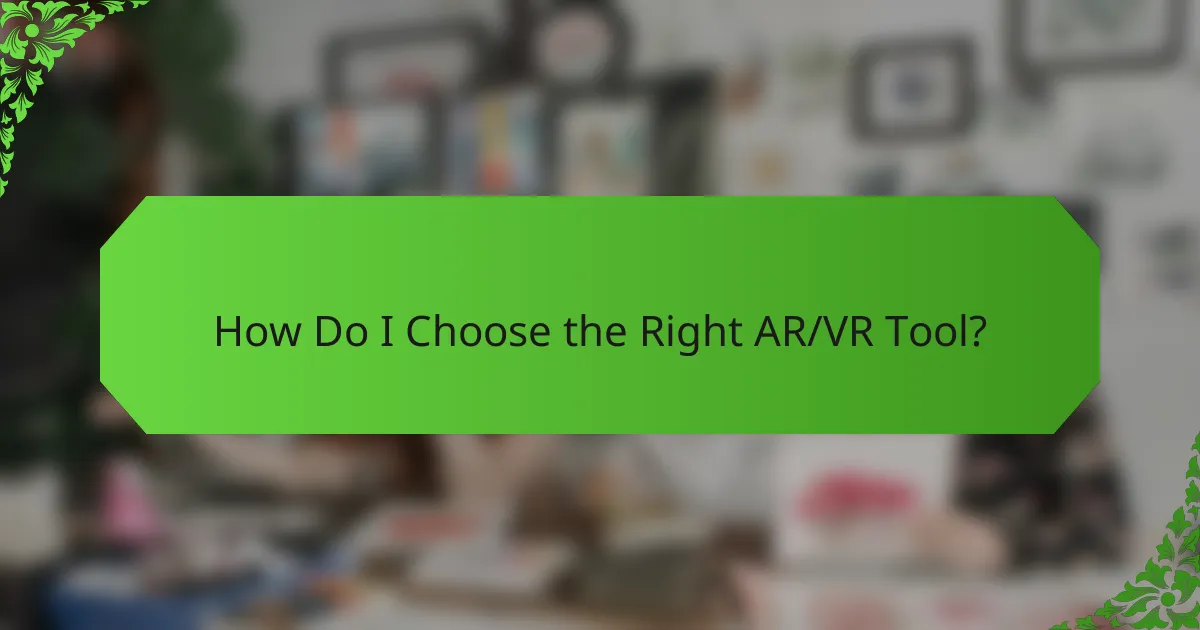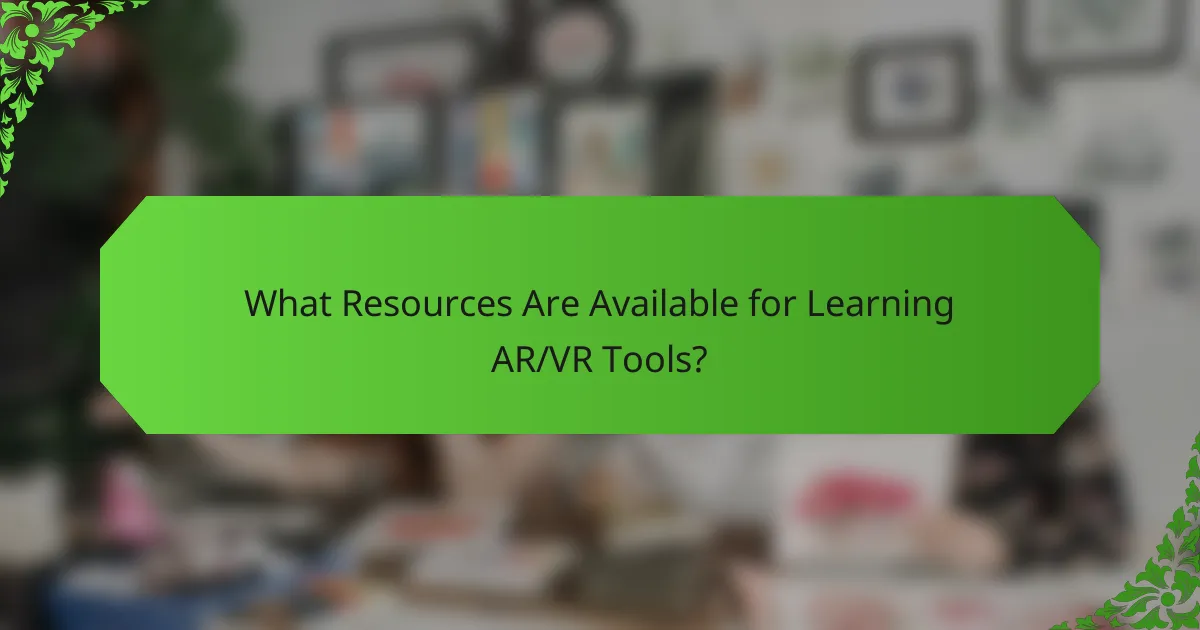For beginners venturing into augmented reality (AR) and virtual reality (VR), a variety of creative tools are available that prioritize accessibility and ease of use. These tools are designed to empower newcomers to craft immersive experiences without requiring advanced technical skills, making the learning process enjoyable and engaging.

What Are the Best AR/VR Creative Tools for Beginners?
For beginners exploring augmented reality (AR) and virtual reality (VR), several creative tools stand out for their accessibility and functionality. These tools offer user-friendly interfaces and robust features that help newcomers create immersive experiences without extensive technical skills.
Unity
Unity is a leading platform for developing AR and VR applications, known for its versatility and extensive asset store. Beginners can leverage its visual scripting tools, like Bolt, to create interactive experiences without deep programming knowledge.
Consider starting with Unity’s free version, which provides ample resources for small projects. The community support and numerous tutorials available online make it easier to learn the basics and gradually tackle more complex features.
Blender
Blender is a powerful open-source 3D modeling tool that also supports AR and VR content creation. Its comprehensive features include modeling, animation, and rendering, making it suitable for creating assets for AR/VR applications.
While Blender has a steeper learning curve, many beginners find success by following online tutorials. Focus on mastering the basics of modeling and texturing first, as these skills are essential for creating appealing 3D environments.
Adobe Aero
Adobe Aero is designed specifically for creating AR experiences without coding. It allows users to import assets from other Adobe products and arrange them in a 3D space, making it ideal for designers familiar with the Adobe ecosystem.
For beginners, Adobe Aero offers intuitive drag-and-drop functionality, enabling quick prototyping of AR projects. It’s particularly useful for showcasing designs and concepts in real-world environments using mobile devices.
SketchUp
SketchUp is a user-friendly 3D modeling tool that is great for beginners interested in architectural design and spatial planning for AR/VR. Its straightforward interface allows users to create detailed models quickly.
Consider using SketchUp’s free version for basic projects. The ability to export models to various AR/VR platforms enhances its utility, making it a solid choice for those looking to visualize spaces in immersive ways.
OpenBrush
OpenBrush is an open-source VR painting tool that allows users to create 3D art in a virtual environment. It’s particularly appealing for artists who want to explore new dimensions of creativity in VR.
Getting started with OpenBrush is simple, as it provides a range of brushes and tools for painting in 3D space. Beginners should experiment with different techniques to understand how to manipulate virtual materials effectively.

How Do I Choose the Right AR/VR Tool?
Choosing the right AR/VR tool involves understanding your project goals, evaluating user-friendliness, and assessing community support. These factors will help you select a tool that aligns with your needs and skill level.
Consider project goals
Start by clearly defining what you want to achieve with your AR/VR project. Are you creating an immersive experience for education, entertainment, or marketing? Each goal may require different features and capabilities from the tools you consider.
For example, if your focus is on education, look for tools that offer interactive elements and easy content integration. If you’re developing a marketing campaign, prioritize tools that allow for high-quality visuals and user engagement.
Evaluate user-friendliness
User-friendliness is crucial, especially for beginners. Look for tools with intuitive interfaces and comprehensive tutorials. A steep learning curve can hinder your progress and enthusiasm.
Consider platforms like Unity or Spark AR, which offer user-friendly features and extensive documentation. Tools with drag-and-drop functionality can significantly reduce the time needed to create your project.
Assess community support
A strong community can be invaluable for troubleshooting and inspiration. Check for forums, user groups, and online resources related to the AR/VR tools you are considering. Active communities often share tips, tutorials, and project ideas.
Tools with larger user bases, such as Unreal Engine or Blender, typically have more resources available. Engaging with these communities can enhance your learning experience and provide support as you develop your skills.

What Are the Key Features to Look For?
When selecting AR/VR creative tools, prioritize features that enhance usability and flexibility. Key aspects include cross-platform compatibility, extensive asset libraries, and efficient real-time rendering capabilities.
Cross-platform compatibility
Cross-platform compatibility ensures that your AR/VR projects can be accessed and utilized across various devices and operating systems. This feature is crucial for reaching a broader audience and facilitating collaboration among team members who may use different hardware.
Look for tools that support major platforms such as Windows, macOS, iOS, and Android. Some popular options, like Unity and Unreal Engine, offer robust cross-platform capabilities, allowing you to develop once and deploy across multiple environments.
Asset libraries
Asset libraries provide a collection of pre-made 3D models, textures, animations, and sounds that can significantly speed up the creative process. A rich library allows beginners to focus on design and functionality rather than starting from scratch.
Consider tools that offer extensive asset libraries, such as Sketchfab or TurboSquid, which can save time and enhance the quality of your projects. Additionally, check if the tool allows for easy import of custom assets, as this flexibility can be beneficial for unique projects.
Real-time rendering
Real-time rendering is the ability to visualize changes instantly as you edit your project, which is essential for effective design and iteration. This feature allows creators to see how their work looks and behaves in a virtual environment without long wait times.
Tools like Unity and Unreal Engine excel in real-time rendering, providing immediate feedback and a more interactive design experience. When evaluating options, prioritize those that offer high-quality graphics and fast rendering speeds to enhance your workflow.

What Are the Pricing Options for AR/VR Tools?
Pricing options for AR/VR tools vary widely, catering to different budgets and needs. Beginners can choose from free tools, subscription models, or one-time purchases, each offering unique features and limitations.
Free tools
Free AR/VR tools are an excellent starting point for beginners looking to explore without financial commitment. Platforms like Blender and Unity offer free versions that provide essential features for creating basic AR/VR experiences.
While these tools are cost-effective, they may have limitations in terms of advanced functionalities or support. Users should be prepared to invest time in learning the software through tutorials and community forums.
Subscription models
Subscription models typically charge a monthly or annual fee, providing access to more advanced features and regular updates. Tools like Adobe Aero and Sketchfab offer subscription plans that range from around $10 to $50 per month, depending on the level of access and additional services.
These models can be beneficial for users who require ongoing support and new features. However, it’s essential to assess whether the recurring cost aligns with your usage needs and budget.
One-time purchases
One-time purchase options allow users to buy software outright, often resulting in lower long-term costs. Tools like Cinema 4D and Unreal Engine offer licenses for a set price, typically ranging from a few hundred to several thousand dollars, depending on the complexity and capabilities.
This option is ideal for those who prefer a straightforward payment structure without ongoing fees. However, users should consider potential costs for updates or additional features that may arise later.

What Are Common Challenges for Beginners?
Beginners in AR and VR often face several challenges that can hinder their creative process. Understanding these obstacles, such as steep learning curves, hardware requirements, and software compatibility, is essential for a smoother entry into these immersive technologies.
Steep learning curves
Many beginners encounter steep learning curves when starting with AR and VR tools. These platforms often require a solid understanding of 3D modeling, programming, and design principles, which can be overwhelming for newcomers.
To ease this transition, beginners should focus on user-friendly software that offers tutorials and community support. For instance, tools like Unity and Unreal Engine provide extensive resources, making it easier to grasp complex concepts over time.
Hardware requirements
Hardware requirements can be a significant barrier for beginners in AR and VR. High-quality experiences often demand powerful computers and specific peripherals, such as VR headsets and motion controllers, which can be costly.
Before investing, beginners should assess their current hardware capabilities and consider budget-friendly options. Entry-level VR headsets like the Oculus Quest 2 offer a balance of performance and affordability, making them suitable for those just starting.
Software compatibility
Software compatibility issues can complicate the creative process for beginners. Not all AR and VR tools work seamlessly with every operating system or hardware setup, leading to frustration during development.
To avoid these pitfalls, beginners should research compatibility requirements before selecting software. Checking forums and user reviews can provide insights into common issues and help ensure a smoother experience with chosen tools.

What Resources Are Available for Learning AR/VR Tools?
Numerous resources exist for beginners looking to learn AR/VR tools, including online courses, tutorials, and community forums. These platforms provide structured learning paths and practical exercises to help users gain hands-on experience.
Online courses
Online courses are a popular way to learn AR/VR tools, offering flexibility and a wide range of topics. Platforms like Coursera, Udemy, and LinkedIn Learning provide courses that cover everything from basic concepts to advanced techniques in AR/VR development.
When selecting a course, consider factors such as the instructor’s expertise, course reviews, and the depth of content. Many courses include practical projects that allow you to apply what you’ve learned, which is essential for mastering AR/VR tools.
Look for courses that offer community support or forums where you can ask questions and share experiences. This interaction can enhance your learning and provide valuable insights from peers and instructors.